How Pallet Inverters Solve Cost-Competitive Pallet Systems for Logistics Hubs in Romania?
Running a logistics hub in a competitive market like Romania is a tough job. You are constantly watching your operational costs, and every small inefficiency feels like a leak in a ship. You might be seeing your profits get eaten away by labor expenses, damaged goods, and the complex, costly world of pallet management. I know this feeling well from my years in the industry. But what if there was a straightforward mechanical solution that could plug many of these leaks at once?
A pallet inverter offers a direct solution by creating a cost-competitive pallet system. It does this by automating the transfer of goods between pallets. This single step significantly cuts labor costs, reduces product damage, eliminates expensive pallet rental fees by allowing a switch to cheaper shipping pallets, and enforces a standard pallet size within your facility. This combination of benefits makes your entire operation faster, cheaper, and more efficient.
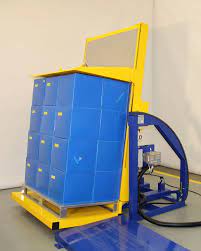
I have helped many clients transform their operations with simple, robust equipment. The pallet inverter is one of the most effective tools I have seen. It is not just about flipping a load; it is about rethinking your entire material flow. Let’s dive deeper into the specific challenges in the Romanian market and see exactly how this machine provides a powerful answer. I will break down the costs and show you the path to better efficiency and higher profits.
You can easily see the direct costs on your balance sheet, like your team's salaries. But are you tracking the hidden costs that slowly drain your resources? I often find that logistics managers are surprised by how much money is lost in processes they consider "normal." Things like manually restacking pallets, dealing with damaged products, and managing different types of rental pallets add up quickly. These hidden costs are what separate a struggling operation from a highly profitable one.
The primary hidden costs in traditional pallet handling are excessive labor expenses for manual restacking, financial losses from product damage during transfer, inefficient use of warehouse space due to non-standard pallets, and the high recurring fees and complex logistics of managing pallet pools like CHEP or LPR.
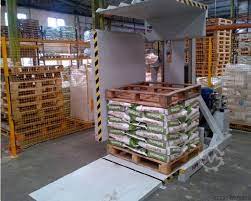
In my experience, a warehouse manager is often too busy fighting daily fires to step back and analyze these drains. But identifying them is the critical first step. Once you see where the money is going, you can take targeted action. Let's break down these costs so you can see the full picture.
Labor and Time Inefficiencies
Manual pallet handling is a major source of hidden costs. Think about the standard process. A shipment arrives on pallets that you cannot use in your facility or send to your end customer. A team of two or three workers must manually unload the entire pallet, piece by piece, and restack it onto a new one. This is slow, repetitive, and physically demanding work. It ties up your valuable workforce in a low-value task. They could be picking orders or loading trucks, but instead, they are just moving boxes from one wooden platform to another.
This process is not just slow; it's a bottleneck. A single truckload with 26 pallets could take a team several hours to process. During this time, your loading dock is occupied, and goods are not moving into your inventory system. The cost is not just the hourly wage of the workers. It is also the lost opportunity cost of having an inefficient receiving process. Furthermore, this type of manual labor has a higher risk of employee injury, leading to potential worker's compensation claims and lost time. This is a classic example of a process that seems simple on the surface but is packed with hidden operational costs that accumulate day after day.
Product and Pallet Damage
Every time a product is handled manually, there is a risk of damage. When your team is restacking hundreds of boxes, some will inevitably be dropped, crushed, or damaged. I have seen clients who accepted a 1-2% damage rate on transferred goods as a standard cost of business. But this is not a cost you have to accept. For a hub handling millions of euros worth of product, 2% is a significant financial loss. This damage directly impacts your bottom line. You either have to write off the product or sell it at a steep discount.
The pallets themselves are also damaged. Wooden pallets, especially one-way shipping pallets, are not designed for repeated, rough handling. Corners chip, boards crack, and nails come loose. A damaged pallet is a safety hazard. It can collapse in your racking or on a forklift, leading to a catastrophic product spill and potential injuries. The cost of replacing damaged pallets and the cost of the goods lost from pallet failure are two more hidden expenses that are often overlooked. A robust system should protect both the product and the pallet, ensuring everything moves smoothly and safely through your facility.
The Complexity of Pallet Pools
For many logistics hubs in Romania, managing pallet pools is a major operational headache. You receive goods on high-quality rental pallets, like CHEP (blue) or LPR (red), but your client requires delivery on a standard Euro pallet or a cheap one-way shipper. This creates a complex and costly situation. You are now responsible for the expensive rental pallets. You must pay a daily rental fee for every pallet in your possession.
This means you need a system to track them, sort them, store them separately, and arrange for their return to the rental pool. This is a logistics operation within your logistics operation. It requires administrative time, warehouse space, and transportation. If a rental pallet is lost or damaged, you have to pay a hefty replacement fee. Many companies I have worked with were spending tens of thousands of euros annually just on managing these pallet pools. This complexity is a huge hidden cost. It does not add any value to your service, but it consumes resources and directly reduces your profit margin.
| Cost Factor | Traditional Manual Handling | Pallet Inverter System |
|---|---|---|
| Labor Requirement | 2-3 workers per transfer | 1 operator |
| Time per Pallet | 15-20 minutes | 1-2 minutes |
| Product Damage Risk | High (1-2% common) | Very Low (<0.1%) |
| Pallet Rental Fees | Continuous (CHEP/LPR) | Eliminated (Switch to in-house) |
| Warehouse Space | Needs separate zones for pallets | Simplified, single standard |
| Worker Safety | High risk of strain/injury | Low risk, ergonomic operation |
How do pallet inverters directly reduce operational expenses?
You know you need to reduce your operational expenses. It is a constant pressure for any business leader. But the question is always how. You can try to cut costs in different areas, but some cuts can hurt your business in the long run. The best way to reduce expenses is to improve efficiency. You need to find a way to do more with less. A pallet inverter is a perfect example of a tool that delivers this kind of efficiency.
A pallet inverter directly reduces operational expenses by automating the slow, expensive, and risky process of manual pallet exchange. It drastically cuts labor hours, minimizes costly product damage through gentle handling, and allows you to stop paying high rental fees by easily switching loads to low-cost shipping pallets.
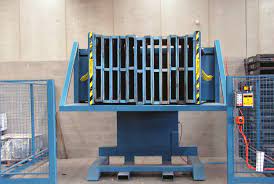
From my perspective as an engineer, the beauty of a pallet inverter is its simplicity. It solves a complex problem with a clean, mechanical solution. Let's look at exactly how it targets and reduces your three biggest operational expenses: labor, damage, and pallet costs.
Slashing Labor Costs
This is the most immediate and easily measured benefit. As we discussed, manually transferring a load from one pallet to another requires a team of workers and a significant amount of time. A pallet inverter transforms this process. A single operator can drive up to the machine with a forklift, load the pallet, and activate the machine. The inverter clamps the load, rotates it, and allows the operator to easily remove the original pallet and replace it with a new one. The entire cycle takes about one minute.
Let's do some simple math. Imagine you have a team of two workers, each earning a loaded wage of €10 per hour. They spend 4 hours a day just transferring pallets. That's €80 per day in labor costs for that single task. Over a year (250 working days), that is €20,000. A pallet inverter, operated by the same forklift driver who is already moving the pallet, reduces that labor cost to nearly zero. The task that took two people 4 hours can now be done by one person in about 30 minutes, integrated into their existing workflow. The savings are direct, substantial, and they start on day one. I have seen this ROI calculation convince even the most careful financial directors.
Minimizing Product Damage
The second area of direct savings is the reduction of product damage. The manual restacking process is inherently risky. Boxes can be dropped, crushed, or misaligned. The pallet inverter’s process is completely different. The machine clamps the load securely from both sides before it begins to move. The rotation is slow, smooth, and controlled. The load is never jostled or subjected to impact. The product is held in its original, stable stack throughout the entire transfer.
This is especially critical for fragile or sensitive goods. Think about bags of cement that can tear, boxes of electronics with delicate components, or food and beverage products where packaging integrity is essential for hygiene. The gentle handling provided by a pallet inverter virtually eliminates transfer-related damage. That 1-2% loss rate we talked about can drop to almost zero. For a logistics hub handling high-value goods, these savings can be even more significant than the labor savings. It also improves your reputation with your clients, as they know their products are safe in your hands.
Optimizing Your Pallet Strategy
This is where the savings become truly strategic. Pallet rental pools are a major expense. A pallet inverter gives you the freedom to escape this cycle of fees. You can establish a new, more cost-effective pallet strategy. Here is how it works: you create a "closed-loop" system inside your warehouse using your own high-quality, durable pallets. These could be sturdy plastic pallets or custom-sized wooden pallets that are perfect for your racking and internal systems.
When goods arrive on an expensive CHEP pallet, you use the inverter at the receiving dock to immediately transfer the load to one of your internal pallets. The CHEP pallet is then returned immediately, stopping the rental clock. Your entire internal operation now runs on a standardized, efficient pallet you own. When it is time to ship the goods out, you use the inverter again at the outbound dock. You transfer the load from your high-quality internal pallet to a cheap, one-way shipping pallet. Your expensive, durable pallet never leaves your facility. This strategy gives you full control over your pallet costs and inventory. The inverter is the key piece of equipment that makes this entire cost-saving strategy possible.
Why is pallet standardization a key to efficiency in the Romanian market?
Your warehouse is like a city. It needs standard roads and rules to function without traffic jams. In a warehouse, your pallets are the vehicles. If you have vehicles of all different shapes and sizes, you will have chaos. They will not fit in parking spaces (your racking), they will get stuck on highways (your conveyors), and your traffic controllers (your forklifts) will have a hard time handling them. This is the problem with non-standard pallets.
Pallet standardization is crucial for Romanian logistics hubs because it ensures compatibility with automated systems, optimizes warehouse density, and streamlines both inbound and outbound logistics. As a key entry point to the EU, Romania deals with diverse pallet types, and a pallet inverter is the essential tool to create an internal standard, bridging the gap between various incoming formats and a single, efficient internal one.
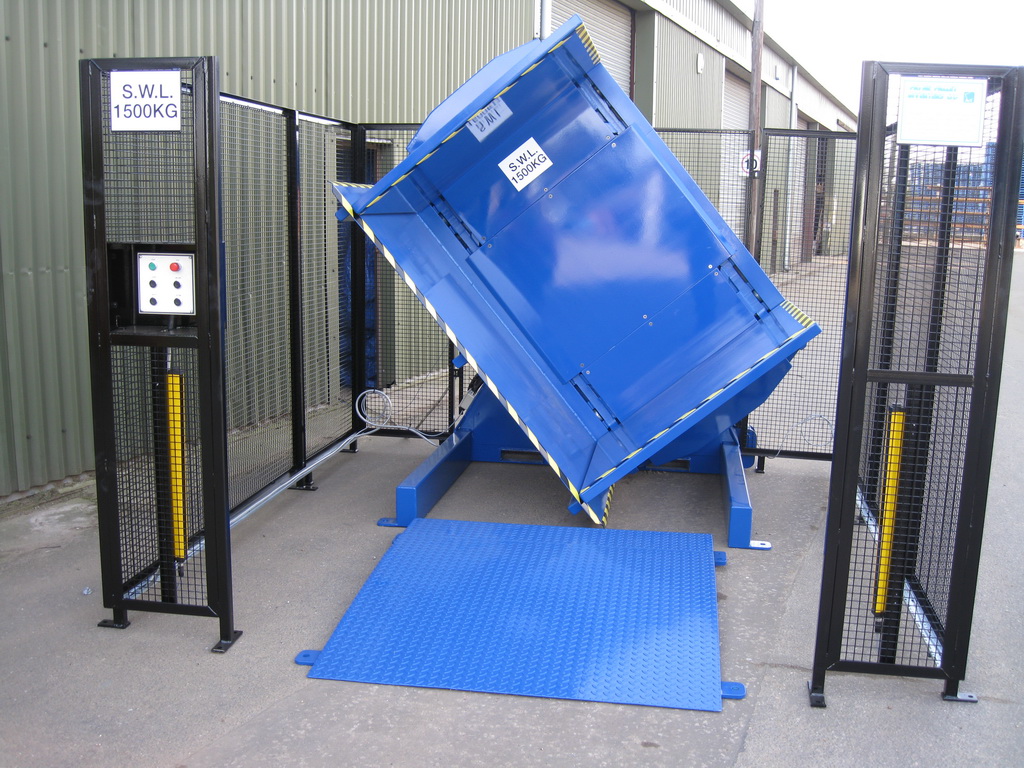
As a hub connecting Eastern and Western Europe, Romanian warehouses see it all. This diversity is a major challenge to efficiency. Creating a single, internal standard is not a luxury; it's a necessity for any modern, automated, and cost-effective operation. A pallet inverter is what makes this standardization practical.
The Challenge of Diverse Pallet Imports
Romania's strategic location means it is a magnet for goods from all over the world. Products arrive from Turkey on non-standard pallets, from the UK on their unique-sized pallets, from Asia on lightweight one-way pallets, and from the rest of the EU on a mix of Euro pallets and rental pallets. Your receiving dock has to be prepared for anything. This diversity creates significant problems.
First, it complicates handling. Your forklift drivers must constantly adjust their forks. Some pallets may not be four-way entry, limiting how they can be picked up. Second, it creates storage chaos. If your racking system is designed for a standard 1200x800mm Euro pallet, a larger or smaller pallet simply will not fit safely. This forces you to create special "bulk storage" areas on the floor, which is a very inefficient use of your expensive warehouse space. This lack of uniformity slows down every single step of the receiving process and creates a ripple effect of inefficiency throughout your entire operation. It is a daily, frustrating problem that prevents you from achieving the high-speed throughput you need to be competitive.
Impact on Automation and Storage
The trend in modern logistics is toward automation. Automated Storage and Retrieval Systems (AS/RS), roller conveyors, and robotic palletizers all promise huge gains in speed and accuracy. However, these systems have one critical requirement: absolute uniformity. An automated system is designed to handle one specific pallet size and type. A pallet that is just a few centimeters off, or has a broken board, can cause the entire system to jam.
A system jam is a disaster in an automated warehouse. It can shut down a major artery of your operation for hours, requiring technicians to manually clear the fault. This downtime is incredibly expensive, both in terms of lost productivity and labor costs for repairs. This is why pallet standardization is not just important for automation; it is a prerequisite. You cannot invest millions in an AS/RS if your inbound pallets are not standardized. The pallet inverter serves as the gatekeeper, ensuring that every single pallet that enters your automated system is a perfect, uniform pallet that will not cause any problems.
Creating a Unified Internal System
The ultimate solution is to create a unified, closed-loop system for your internal operations. A pallet inverter makes this a simple, two-step process.
-
Inbound Standardization: You place a pallet inverter at your receiving docks. Every pallet that comes into your facility, regardless of its size, type, or quality, goes through the inverter. The load is transferred onto your high-quality, perfectly uniform internal pallet. The original, non-standard pallet never enters your main warehouse. It can be immediately sorted for return, recycling, or disposal.
-
Outbound Flexibility: Your entire warehouse—your racking, your internal transport, your picking operations—now runs on a single, known pallet standard. This creates incredible efficiency. When an order is ready to ship, it is brought to the outbound docks. If the customer requires a specific pallet type (like a Euro pallet or a heat-treated pallet for export), you use another pallet inverter to transfer the load from your internal pallet onto the required shipping pallet.
This system gives you the best of both worlds. You get the internal efficiency of complete standardization, while retaining the flexibility to meet any customer's specific shipping requirements. It turns a chaotic, unpredictable process into a smooth, controlled, and highly efficient manufacturing-like workflow.
My Insight: Beyond ROI, what strategic value does a pallet inverter bring to a forward-thinking CEO?
Many executives I meet, especially sharp leaders like Javier Morales, are rightly focused on the numbers. They want to see a clear Return on Investment (ROI) for any new equipment. They analyze payback periods, operational cost savings, and impact on production metrics. This is smart business. But focusing only on the direct ROI can sometimes cause you to miss the bigger, more strategic picture. A piece of equipment is not just a line item; it's an enabler. It can change how you operate, how your employees feel, and how your customers see you.
The true strategic value of a pallet inverter is not just cost savings; it is the operational agility and resilience it creates. It gives your business the flexibility to handle any client's needs, enhances worker safety and morale, and projects the image of a modern, high-capability partner. It is a direct investment in your company's reputation and future-readiness.
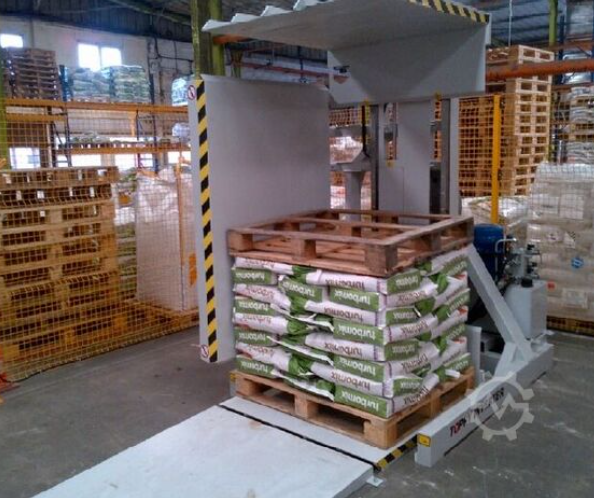
I want to share a story from my own experience. It reminds me of how a pragmatic leader like Javier, who has built his success on innovation, can leverage a simple machine for a massive strategic advantage.
The Client and His Challenge
I worked with a client who ran a large distribution center for paper products—huge, heavy reels of paper. Like Javier's steel business, the product was heavy, and the margins were tight. Their main challenge was pallets. The massive paper reels would often break the standard wooden pallets they received them on, creating a huge safety risk. Their solution was to manually restack these heavy reels onto very expensive, reinforced custom pallets. The process was slow, dangerous, and the cost of the custom pallets was eating into their profits. They saw it as a cost problem. They came to me looking for a cheaper way to handle the reels.
The Solution: A Shift in Perspective
They initially asked if we could build a stronger, cheaper pallet. But after watching their operation, I realized the pallet was not the real problem. The problem was their process. We did not just sell them a machine; we helped them redesign their workflow. We installed a heavy-duty pallet inverter at their receiving dock.
Now, when a truck arrived, they used the inverter to immediately transfer the heavy paper reels from the flimsy shipping pallets to their own captive fleet of reusable steel pallets. These steel pallets were indestructible and perfect for their internal racking. The safety risk of collapsing pallets vanished overnight. The slow, dangerous manual handling was gone. Their internal operation became incredibly safe and efficient. Then, at the outbound dock, they used the inverter to place the reels back onto standard, cheap wooden pallets for final delivery, just as their customers required.
The Strategic Outcome: From Cost Center to Competitive Edge
The ROI from labor savings and eliminating pallet breakage was obvious and paid for the machine in under 18 months. But the real win was strategic. First, their safety record improved dramatically. This not only protected their employees but also led to lower insurance premiums. Employee morale improved because their most difficult and dangerous job was eliminated.
Most importantly, they changed how they sold their services. They stopped competing on price alone. They started marketing their "damage-free, safety-first handling process." They could guarantee to their customers—the printing presses—that the paper reels would arrive in perfect condition, with no risk of damage from a collapsed pallet. This became their unique selling proposition. They became known as the most reliable and highest-quality distributor in their region. They won larger, more profitable contracts because they turned an operational problem into a strategic advantage. This is the kind of forward-thinking that turns a good company into a great one. It is looking beyond the machine and seeing the new capability it unlocks for your entire business.
Conclusion
Pallet inverters are not just machines. They are strategic tools for Romanian logistics hubs to cut costs, boost efficiency, and gain a powerful competitive edge in a demanding market.




